I'm hoping for good things from this latest Hailanghao production - Mingxiangyayuan Company makes just a few productions each year (2.5 in 2008), which is a very dignified number. Much more than that and the quality has to be questionable, as there's only so much one "artesan" producer can do without sacrificing attention and quality. (Regular readers will remember my complaint that Xizihao made 17 teas in 2007, for example - and those are just the ones I know about.)
This is a tea with a big billing. I bought it from Yunnan Sourcing, where the product notes read that this is the "most premium" Hailanghao production since the famous 2006 Laobanzhang. I loved that tea, but missed out on buying it, and AL was kind enough to provide me with a much-valued sample. I am determined not to let this one pass similarly!
Half of the leaves (allegedly laoshu, or "old tree") come from Laobanzhang village, and half come from nearby Laoman'e village - hence the "Ban'E" name, being a conjunction of the two villages. As ever, I suggest taking leaf claims with a huge pinch of salt. 235 kg of this tea were produced, equating to just 627 bing, or 90 tong. That's not a huge amount, given how those 90 tong have to be spread around the various distributors...
Half of the leaves (allegedly laoshu, or "old tree") come from Laobanzhang village, and half come from nearby Laoman'e village - hence the "Ban'E" name, being a conjunction of the two villages. As ever, I suggest taking leaf claims with a huge pinch of salt. 235 kg of this tea were produced, equating to just 627 bing, or 90 tong. That's not a huge amount, given how those 90 tong have to be spread around the various distributors...
It's more seriously priced, being over $50, which makes it comparable to prices reached by some premium labels. It's a definite increment for Hailanghao, which are usually much less if you buy them during their production year. Is it worth it?
Shown above, the leaves are quite dark and small, but it is the aroma that arrests the attention: long, Banzhang sweetness with a solid base of tobacco makes me a happy drinker. In the wenxiangbei [aroma cup], sweet tobacco leading into a candy finish - excellent stuff.
The flavour opens with tons of tobacco, and then proceeds to become yet stronger in tobacco as it moves to the back of the mouth. In the throat, a mouth-watering huigan [sweet aftertaste] and plenty of challenge. Happily, the soup is thick and heavy, and heading towards orange, as shown below, along with Haidu [black belly], our fat feline friend.
Shown above, the leaves are quite dark and small, but it is the aroma that arrests the attention: long, Banzhang sweetness with a solid base of tobacco makes me a happy drinker. In the wenxiangbei [aroma cup], sweet tobacco leading into a candy finish - excellent stuff.
The flavour opens with tons of tobacco, and then proceeds to become yet stronger in tobacco as it moves to the back of the mouth. In the throat, a mouth-watering huigan [sweet aftertaste] and plenty of challenge. Happily, the soup is thick and heavy, and heading towards orange, as shown below, along with Haidu [black belly], our fat feline friend.
What a lovely production this is. It has plenty of bitterness to keep you on your toes, but which can be controlled easily and which only complements the flavour, inducing that strong huigan. The chaqi is soothing, and I feel at ease, but simultaneously brightened. As the infusions march on, I am left feeling very positive.
Happily, diplomatic negotiations result in my securing wifely agreement to buy a tong of this tasty shengpu. I'm looking forward to enjoying more sessions with this tea, as it's right up my street.
Is it worth 3 cakes of good 2008 Dayi? That's up to you. My solution - buy them all!
Happily, diplomatic negotiations result in my securing wifely agreement to buy a tong of this tasty shengpu. I'm looking forward to enjoying more sessions with this tea, as it's right up my street.
Is it worth 3 cakes of good 2008 Dayi? That's up to you. My solution - buy them all!
Addendum
July, 2011
I bought a tong of this, back in 2009, and have left it for the last two-and-a-half years. It has come on quite well, and shows tons of potency.
The leaves are particularly beautiful, being fragrent and sweet. The soup is a solid, husky orange with a huge aroma of smokiness, which then becomes fruity, and, finally, filled with orthodox sweetness. It is big, bitter, longlasting, and tangy.
"Far too bitter for me", noting my dear wife.
"Too big to fail", I wrote in my diary, given its hugeness and uncompromising nature.
Is it aging? It has become lower and heavier, decreasing in brassy kuwei and filling out its dense, powerful base. It becomes sour.
"Good for a mild hangover", I seem to have written...
Addendum
August, 2013
I have the tong pictured above, priced at around $50 per cake. I cannot imagine buying anything else from Hailanghao, given the (really very silly) modern prices, but they combined stability, strength, and decent value back in 2008.
The leaves are surprisingly whole and large, with a quietly sweet scent.
There is absolutely nothing quiet about the soup, however. The wenxiangbei [aroma cup] is filled with a strong sweetness, which endures very well. It is clean, low, and transforms itself into a lengxiang [cooling scent] of sticky caramel - much as I remember it.
The good news is that this cake is strong. The bad news is that this cake is still really very strong indeed! It is thick, broad, and penetratingly sweet. It charms last long after the swallow, leaving the mouth feeling cooled and active. It is very drinkable, surprisingly; I rather enjoy this early stage, in which it has become heavy and woody while retaining the potency of its youth.
The bitterness builds with passing infusions, and I chastise myself for being a little too free with the quantity of leaves that I brew. Infused carefully (i.e., extremely rapidly), it remains sweet and pleasant in later infusions. It is well-balanced, and worth $50 of anyone's hard-earned currency, I'd say.
The bitterness builds with passing infusions, and I chastise myself for being a little too free with the quantity of leaves that I brew. Infused carefully (i.e., extremely rapidly), it remains sweet and pleasant in later infusions. It is well-balanced, and worth $50 of anyone's hard-earned currency, I'd say.
Addendum
January, 2015
This cake is coming along well. It remains bitter, but is aging properly, and has deepened in both colour and character. This is well worth keeping an eye on.

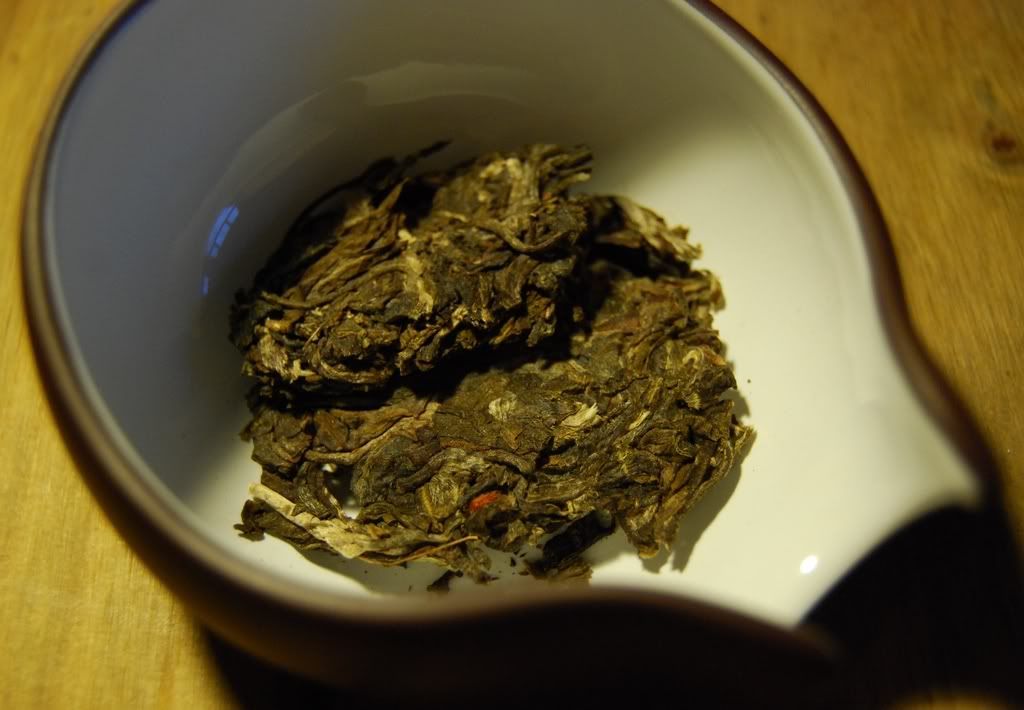
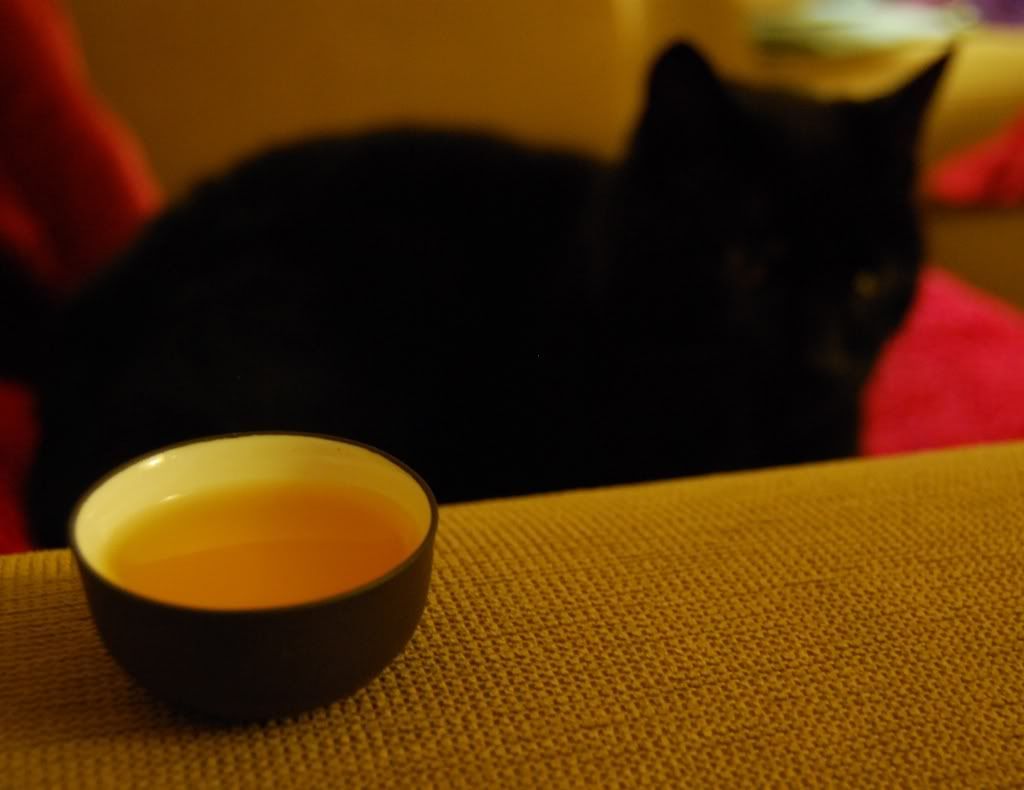
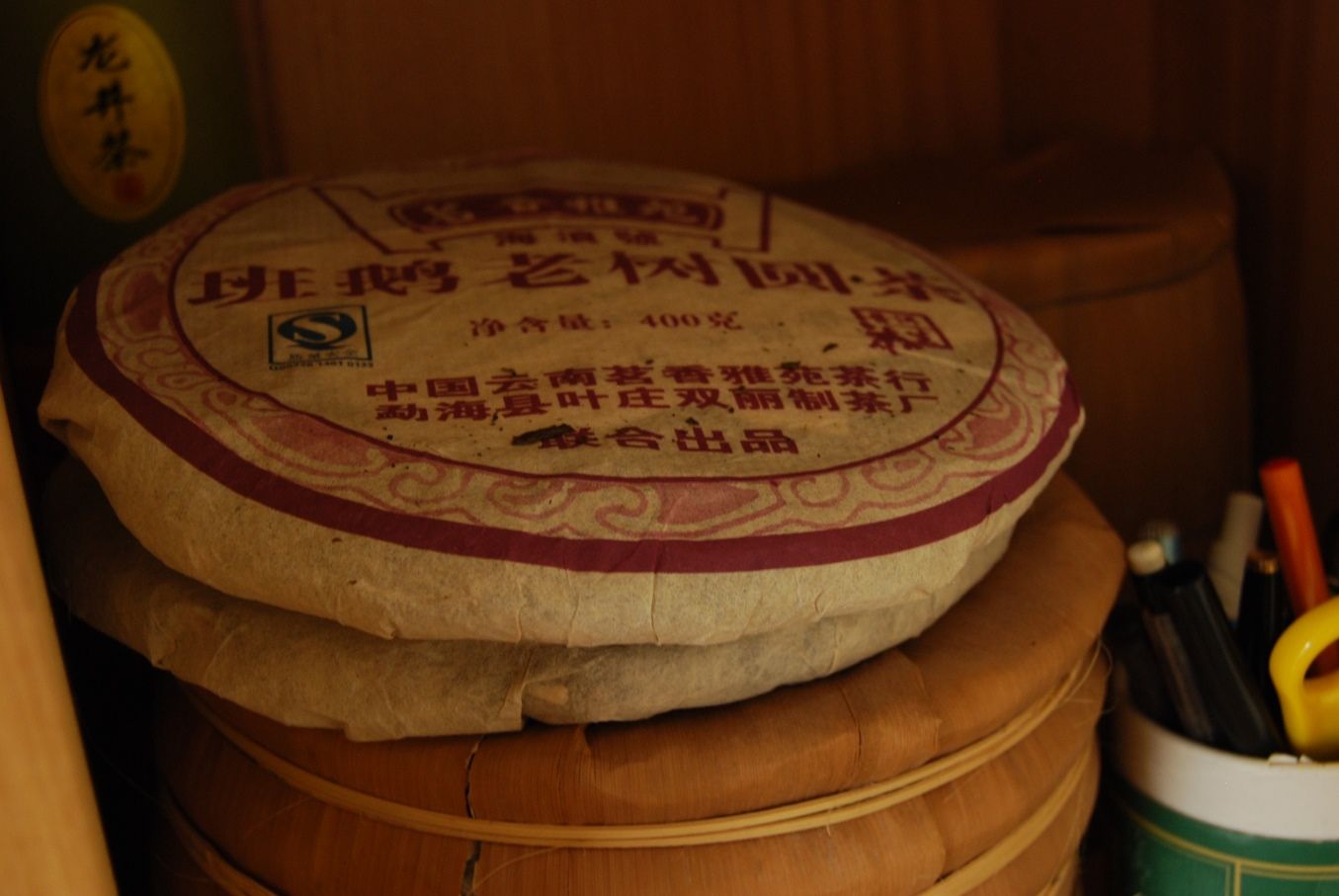

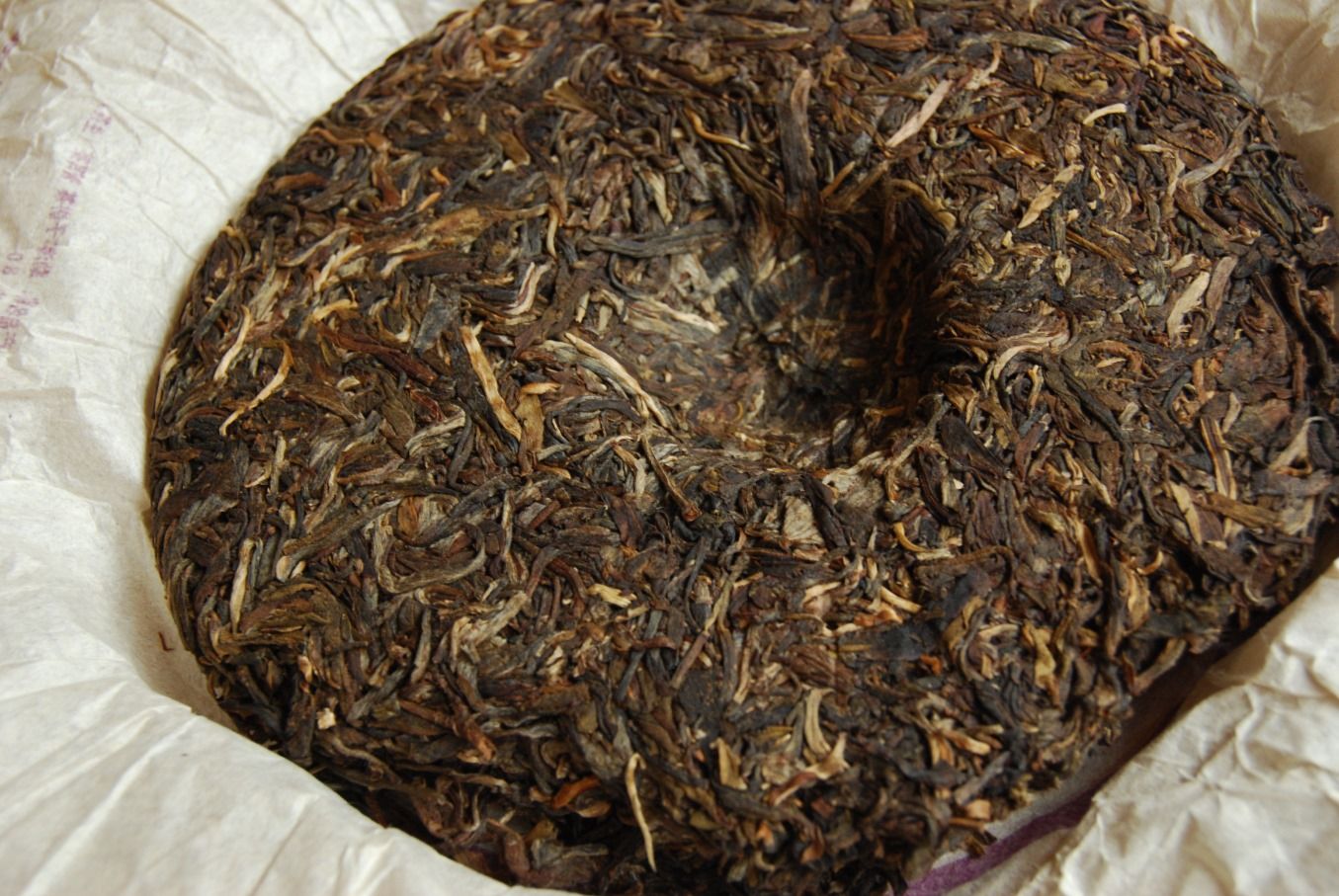
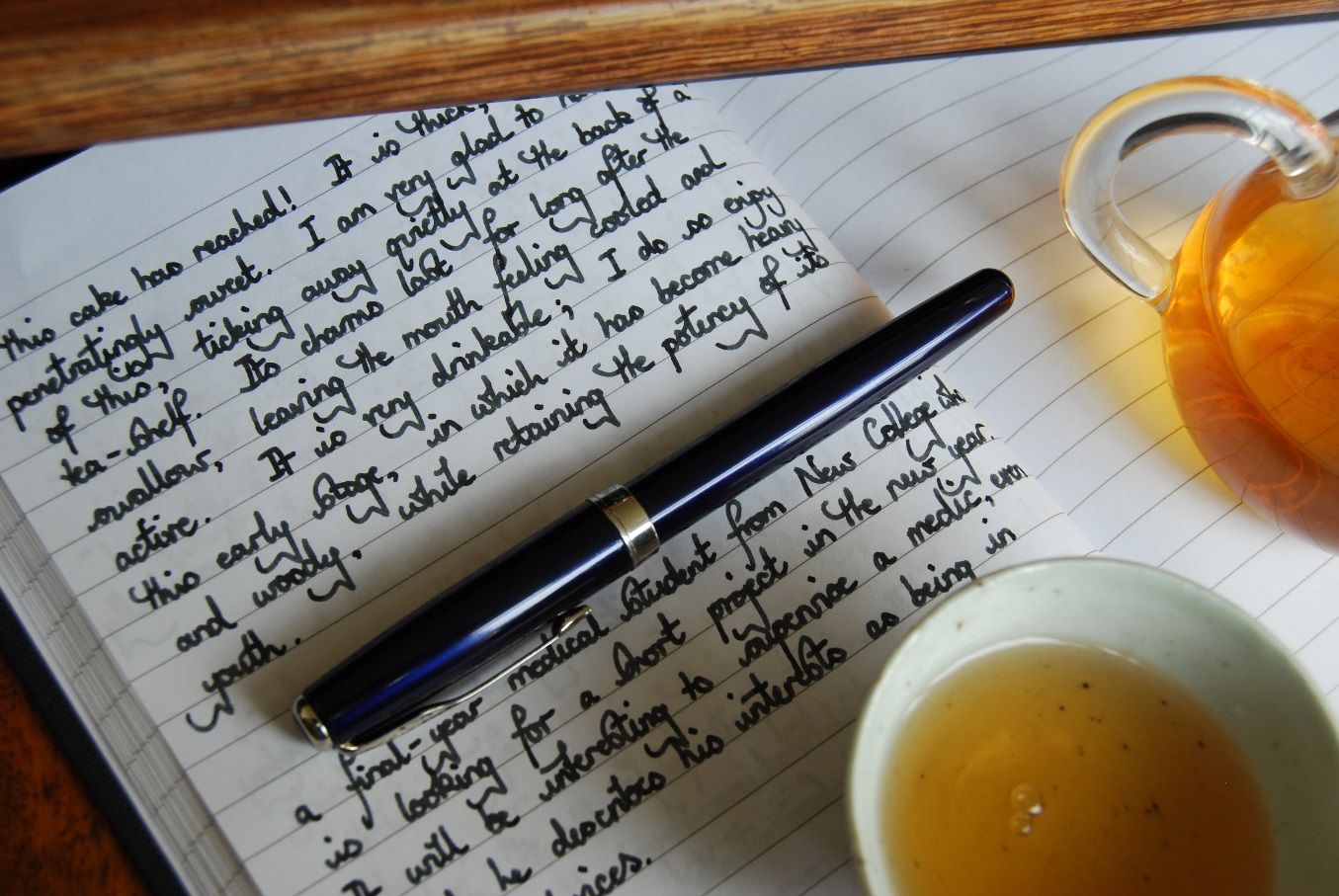
Whether this is really worth $100 per cake now is another story, but I think at the least it is one my better collection. I almost finished two cakes of this so far. A few years ago it was really bitter but now I find it is rather tasty.
ReplyDeleteDear Apache,
ReplyDeleteAgreed - at the opening price, why not? :)
Toodlepip,
Hobbes